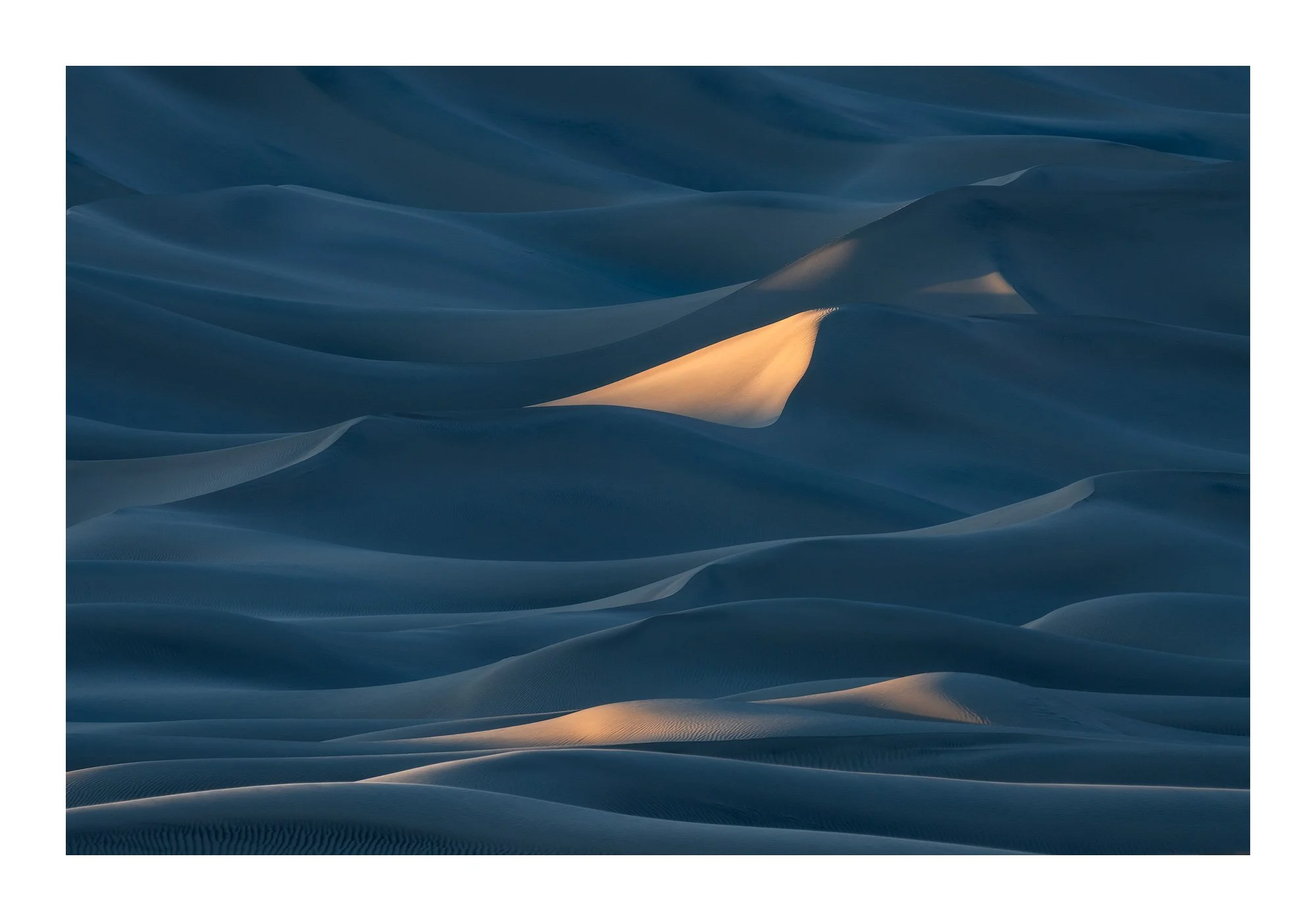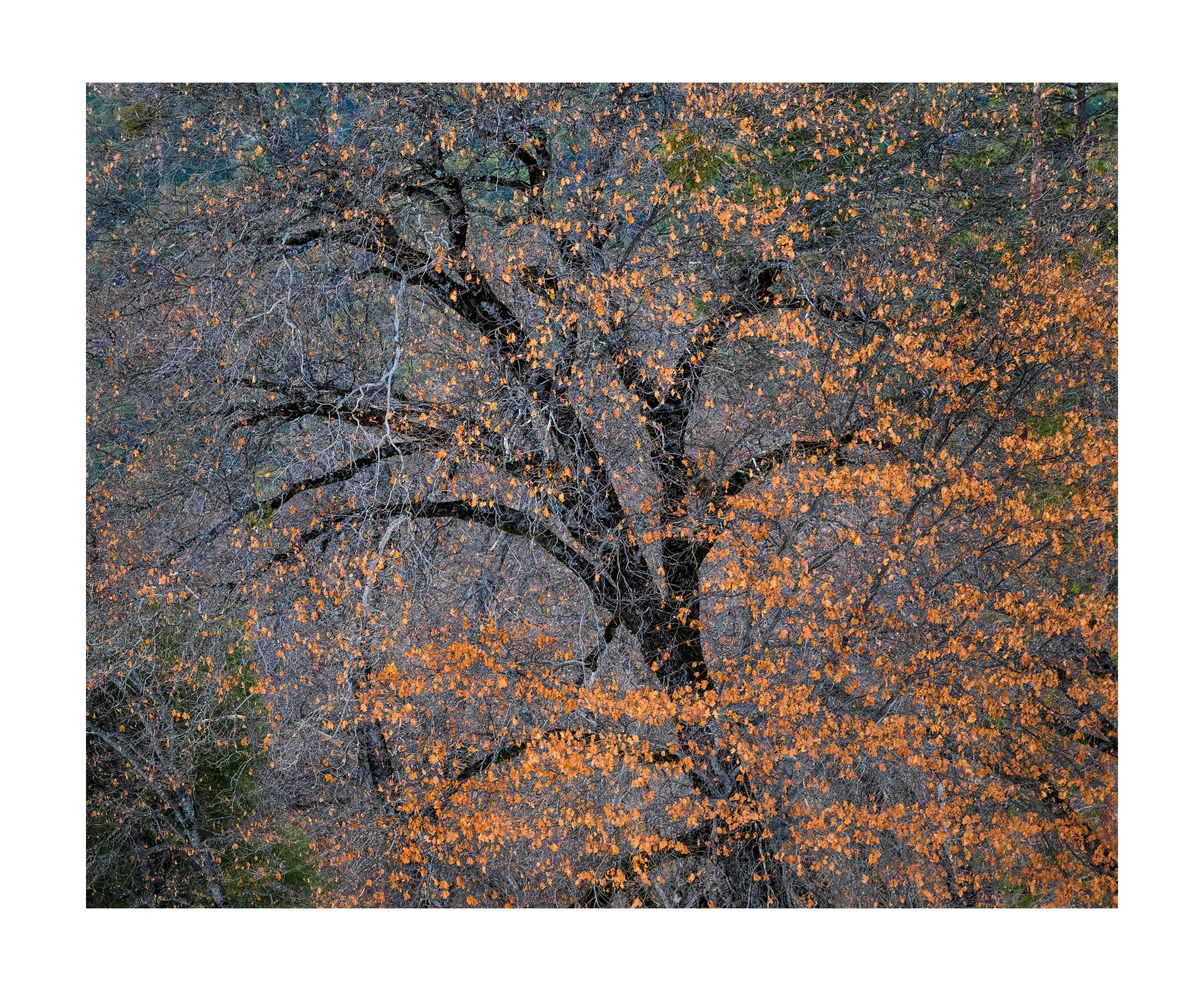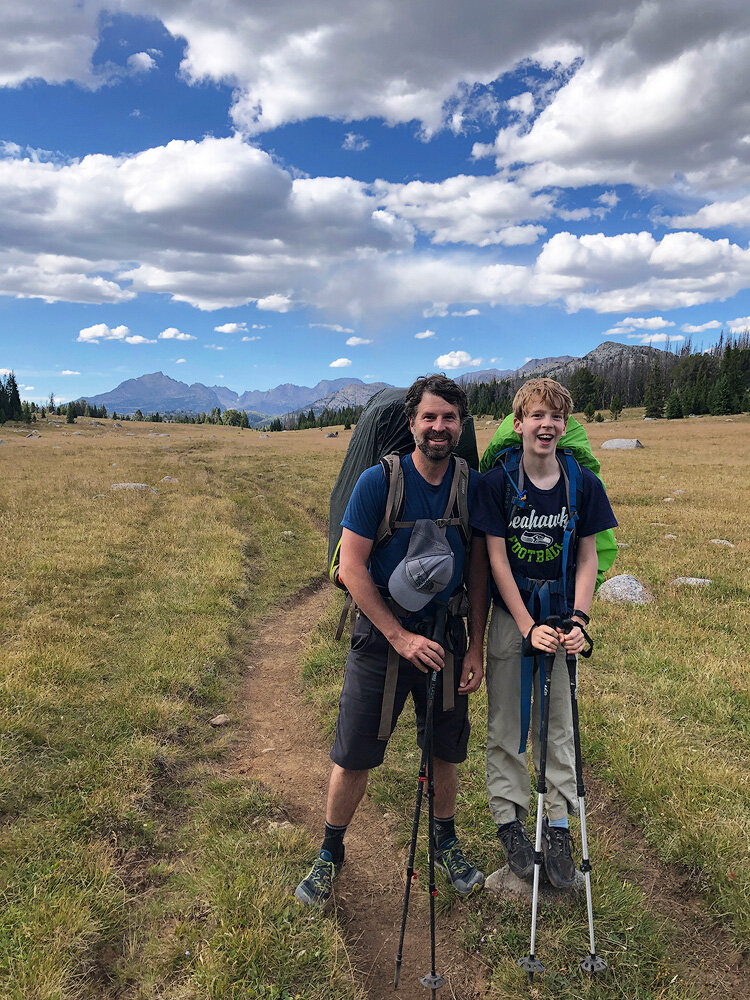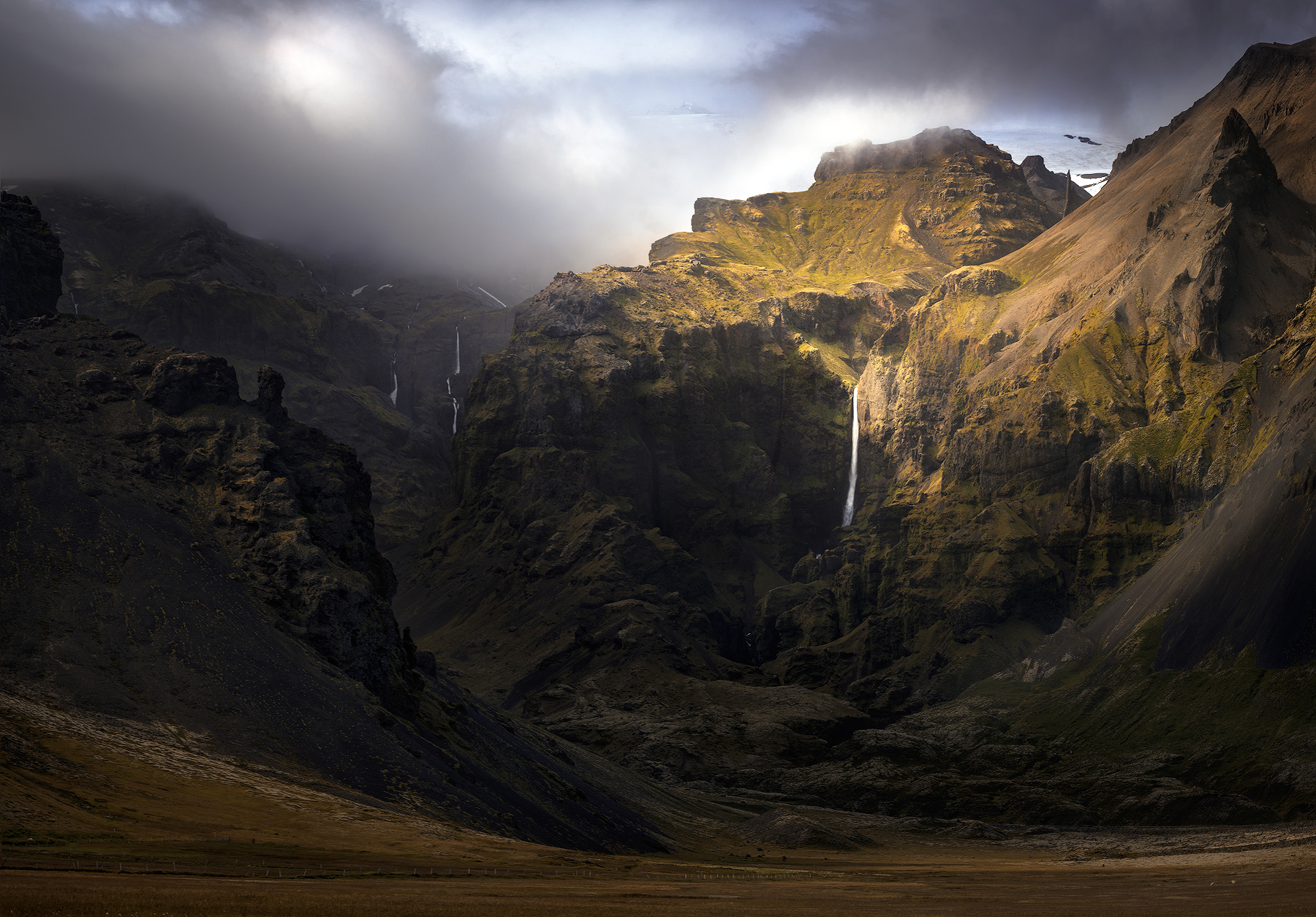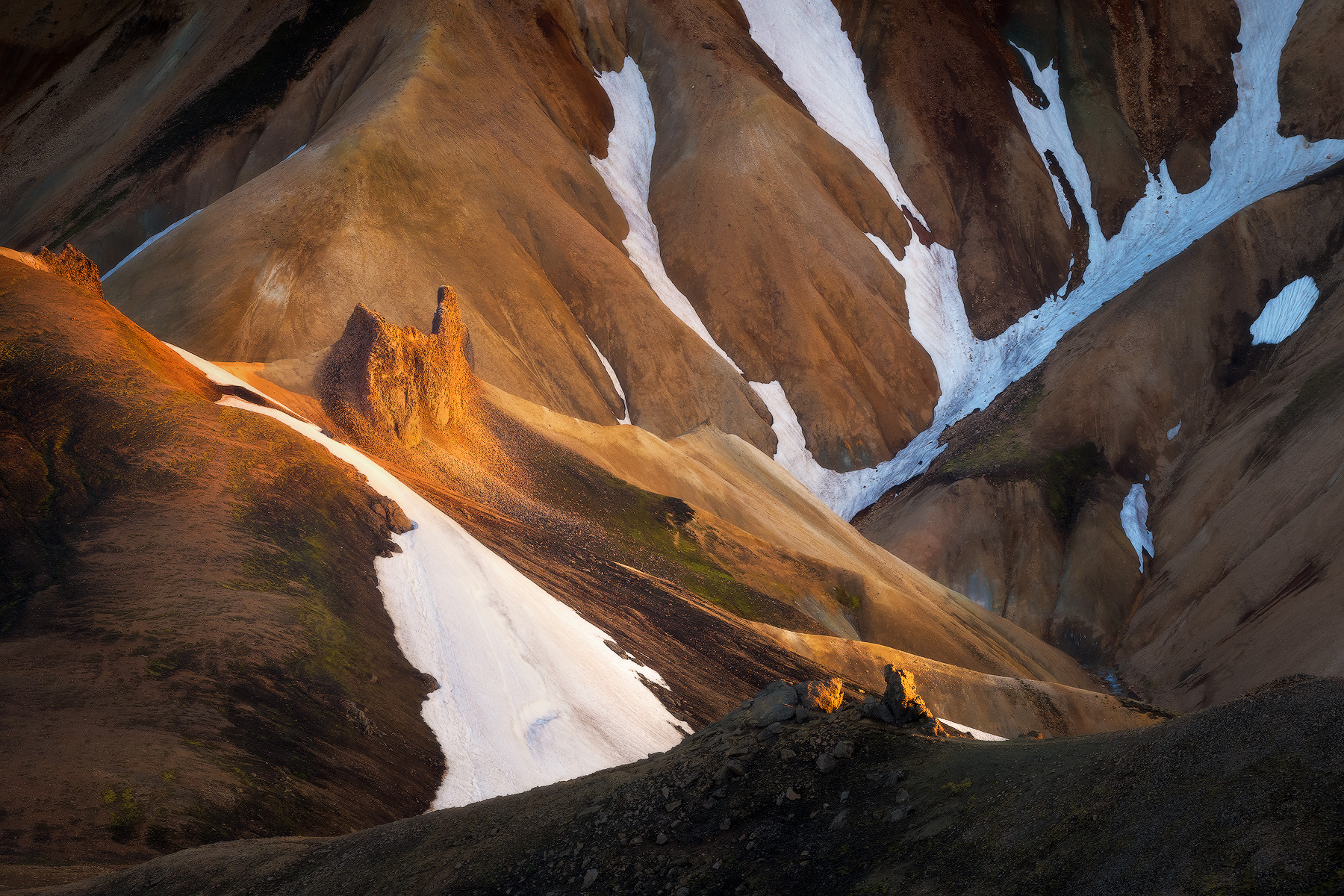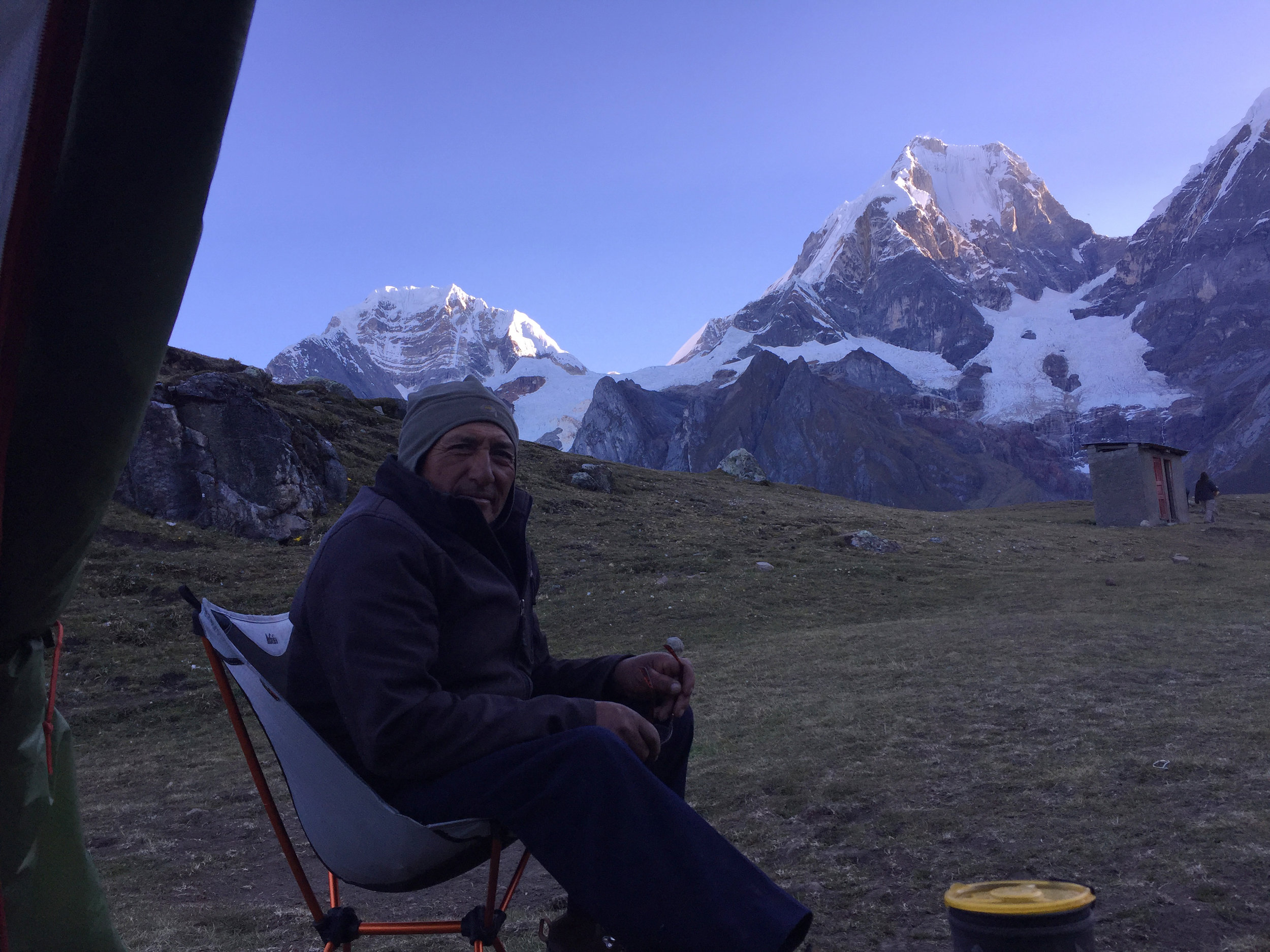Last year I never found the time to write my 2023 rewind, an annual end of year review of some of the images and moments which made the past twelve months so special. I always find taking a breath to reflect back on a year’s worth of work to be both meaningful and useful. It allows me to relive many good memories, but provides space to consider how my work may have changed over the time span. It’s fascinating to see which images I select as there are always one or two which are surprises.
The good news is my yearly rewind is back for 2024! Below are some of the images which represent my year photographically. Thanks as always to the people who helped make those twelve months so special. You know who you are.
“Winter Horsetail”, Columbia River Gorge, January 2024
Every few years or so a deep arctic blast descends on the Pacific Northwest. If sub-freezing temperatures persist for more than a few days magic descends and transforms the Columbia River Gorge’s iconic waterfalls into ice chandeliers. This past winter we experienced one of the colder spells in recent memory, with daytime temperatures not even making it out of the teens. Time to head for the Gorge. I visited this falls twice during the cold spell, not that I planned that. I found this composition on the first trip but inadvertently didn’t see some distracting intrusions in the lower portion of the frame. Happens from time to time. I partly blame numb fingers and fogged up glasses. Luckily the cold air mass remained in place long enough for me to return again. This time I didn’t screw it up.
“Dark Land”, Death Valley National Park, February 2024
Visiting Death Valley each year holds more meaning than visiting any other area aside from Olympic National Park. Visiting this remarkable landscape under the winter sun, breathing in the dry air, looking out over miles of uninterrupted geology, watching as the light evolves with the day refreshes my photographic soul in the early part of each year. As I’ve mentioned elsewhere, visiting such a photographically stimulating place every year allows me to recalibrate my progress, to see the distance I’ve grown over the past year, and perhaps preview where I may be heading over the coming twelve months. I’ve come to view Death Valley as a teacher. I leave each year with a clearer sense of myself not only as a photographer but also a person.
When my friend’s Matt Payne, Kane Englebert, and myself set out the morning this image was made we held no intention of photographing the Panamint Hills. We were more interested in the patterns and tiles covering a section of the valley. But as it so often has a way of doing in Death Valley, light ultimately dictated where we trained our camera lens. Broken clouds to the east allowed streams of low angle sunshine to spotlight the hills, slowly floating over the rugged coffee brown topography like caramel colored spirits. As the light moved various compositions and framings opened then closed again, only for other unforeseen compositions to suddenly appear. Gradually changing light like this is quite possibly my favorite time to be out photographing. The changing light is slow enough to respond to and compose with relative ease but fast enough to provide a large group of image ideas before the light finally becomes too harsh.
“Step Down, Then Back”, Olympic National Park, March 2024
If you follow my work then you already know what an important role Olympic N.P. has played in my life. I can literally say I would not be living the life I am now if not for a summer job working in the park during college. Its magnetic draw drove me to move out west. This life change drove my passion for moving through nature, which birthed my love for photography. I am who I am because of those long days breathing in all the park’s wonders thirty years ago.
So this year I wanted to visit this old friend in the early spring for the first time, to see and experience it with different clothes on. This image from the Sol Duc valley started as a sleeper image, one which initially didn't impress but then continued to age well each time I scrolled past it in my folder of raw files from the trip. It kept gently asking me to process. So I did one day. I immediately kicked myself for not fully recognizing its potential earlier. The high contrast backlit lines, arches, near-far balanced interest, and textures all work seamlessly. The light in particular simplified the mess of forest. There will always be things I could nitpick but perhaps that is a good thing. Modern nature and landscape photography can often feel overly-sanitized. There’s a certain earthly charm drawn from viewing messy images. They are often imperfect, just like nature.
“The Release”, Columbia River Gorge, May 2024
The week before photographing this scene my family and I hiked underneath this same waterfall. I had no camera, by design. Hiking with my family without a camera frees me to enjoy being with my family more. If I had a camera my mind would constantly be scanning for bits of interest. It’s hard to suppress this instinct so the only way to do so is to not bring a camera. Anyway, the light we encountered as we walked beneath this waterfall was absolutely glorious. It was only striking falls leaving everything behind cast in shadow. I knew I had to return with a camera. A week later I did.
After playing with a few lenses I settled on my 100-400. Even though the broader scene has beauty and contained interest throughout, the longer focal range allowed me to focus in on the interplay between the brilliantly illuminated falling water, columnar columns, and deep shadows. I intuitively increased my shutter speed to between 1/3000th and 1/6000th of a second. Using an ultra fast shutter allowed me to freeze the falling water drops while also allowing ghostly shapes to develop in the water itself. Of the nearly two hundred frames I photographed this one felt most complete.
“Ohana”, Mount Rainier National Park, July 2024
Like Olympic National Park, Rainier holds a special place for me. I’ve lost count of all of my visits. I’ve backpacked the 93 mile Wonderland Trail, camped for dozens of nights in the woods, climbed to its icy crown on five occasions, and walked through the park’s subalpine meadows and forests on more days than I could possibly remember. Rainier also become crowded, too crowded. But I’ll always return. Visiting Rainier is like visiting an old friend who I’ve experienced a lot of good times with. There’s always lots to catch up on.
When I think of photography in Mount Rainier National Park I envision images of wildflowers, Rainier’s towering glaciated volcanic cone, and subalpine forests. But that’s not all the place has to offer. Rainier holds a vast carpet of old growth forest in its lower reaches, areas which garner little attention from photographers. Lately I’ve decided to make a concerted effort to photograph them more often. During a visit this past summer clouds rolled in blocking mountain views and producing general flat light. Bad for mountain photography, perfect for forest photography! I spent the afternoon looking for little pull outs and roads which would allow me to access more of these low elevation old growth forests. On one such excursion I walked a gravel road through a forest filled with magnificent trees sprinkled with vine maples. Light winds and a few sprinkles flowed through the forest, bringing with it energy. I spent an hour or more finding different arrangements. This image of a tall vine maple rising up to meet the light was my favorite from the session as it captures the forests’s inherent complexity while retaining visual order.
“Swift’s Landing”, Iceland, July 2024
Of all of the aerial images I photographed while in Iceland this one speaks to me most. I’ve thought about why this may be but words fail me. That’s the beauty about visual art, it doesn’t require the use of language to impart value. I often wonder how often the appreciation of an image often relates more to accompanying text rather than the image itself. I’m conflicted. I enjoy learning more about the artist’s process and thinking behind an image but am also skeptical about the ease with which a photograph’s perceived value can be artificially inflated through the application of attributed meaning, which may or may not be relevant to the act of creating the image in the first place. Shouldn’t a photograph be evaluated and appreciated mainly on visual merit? If so, what role should titles, captions, text descriptions, and stories play? Do photographers also need to be effective writers? It’s something I struggle with. It’s the chief reason why the task I dislike the most is typing out image descriptions.
So I’ll leave that there. This is my favorite aerial image from my recently released Iceland ebook and I can’t really say why. Perhaps there’s no need to.
“Shiva’s Fury”, Iceland, July 2024
Back in 2018 I photographed a variation of this composition using a much longer shutter speed, creating a silky veil segmented by dark and bright water streaks. This soft gentle feel was then juxtaposed against the explosive force the descending water exerted on the rocks below. While I liked this contrast in energy, I always thought a better concept for this scene would be to focus and bring forward the sheer explosive force of the water. So when I found myself standing in the same exact spot this past summer I focused my efforts on bringing this concept to life. A high ISO setting and resulting fast shutter speed captured the energy I sought. A hundred later frames this one best exudes the thundering waterfall’s explosive power and fury. Those of you who have experienced Dettifoss understand how the force of this wall of water is felt throughout the body.
“Puffin Trip”, Iceland, July 2024
I’m not much of a wildlife photographer but when a rainy forecast over southern Iceland chased us into Iceland’s eastern fjords I experienced a magical “night” photographing puffins. The colony we visited was enormous and we were able to walk along a boardwalk mere feet away from hundreds of puffins. This afforded a wide array of photographic possibilities. The most surprising opportunity though occurred at sunrise when the rolling ocean reflected color from the setting sun. Occasionally a puffin would swim through creating a unique and surprising image. It was one of the strokes of serendipity which come along ever once in a while. I could hardly believe my good luck.
“Glancing Glow”, North Cascades, October 2024
Alpine larch trees amaze me. The needles of this strange species of conifer turn golden yellow during a brief window each fall before dropping to the ground. These hard to reach alpine wonders have become one of my favorite trees to photograph over the years, chiefly because of the effort it takes to reach them and the exceptionally small peak color window. When the sun drops towards the horizon their needles can become backlit by the brilliant sun while the surrounding mountain basin is cast in shadow. Backlighting is my favorite condition to photograph larches. They practically radiate electricity. A few minutes after this image was photographed the sun dropped below the jagged mountains above and the scene took on a completely new identity. Soft contrasts with pastel yellow and blues. It was a whirlwind of visually stunning material to work with.
“Stone Garden” North Cascades, Washington October 2024
On the last morning of a four day larch photography trip we stopped at what was initially thought of as an assuming spot. Sure the ground cover held nice rich color. The trees were spaced well and the forest floor clear of clutter. But after this initial inspection I noticed these boulders. Out came the camera. Their large forms sporadically dotted the forest, having fallen from cliffs high above. Their presence felt palpable, as if they were inhabitants stoically guarding this forest. Their grey color also served as a neutral toned counterpoint to contrast and bring forward the richer colors throughout the scene. It’s funny how different photographers view things. As we walked around a good friend of mine remarked, “This place would be awesome if it weren’t for all of the boulders.” Pretty funny.
“Life’s Rich Pageant”, Utah, November 2024
Besides being named after REM’s best album, this telephoto image of fading fall color in southern Utah is a dark horse favorite from 2024. I went to this location to photograph post-sunset light glowing on a backdrop of badlands. But while I waited for the glow to materialize I switched to my 100-400mm lens and began sketching images of trees filling the valley below. After a bit of experimentation I settled on this composition. Good color, just after peak, yet still so soft and beautiful. I don’t often have the chance to photograph trees like these. The Pacific Northwest sure doesn’t have large swaths like Utah. So as my friends and I stood on a high ridge looking out over a landscape filled with incredible geology, it felt fitting to have this very small snippet of the larger view hit home the most.



























































